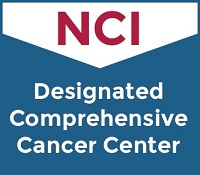Newsmakers
Our great stories can become your next great story when you learn about the exciting, world-class medicine that is being developed and delivered at the University of Maryland Medical Center!
Check this page often for timely updates about the most current life-saving medical advances and treatments happening at UMMC. And then reach out to a member of the media team to help you schedule interviews and video for your next great story.
Groundbreaking for Major Expansion of UMGCCC
Additional Resources for Reporters
- Renderings
- Video of New Building
- Video of Building Planning
- UMGCCC Fact Sheet
- Learn more about the Stoler Center for Advanced Medicine
Symbolic Mosaic Heart Sculpture Unveiled at the University of Maryland Medical Center Downtown Campus
Additional Resources for Reporters
Microtentacles: How Breast Cancer Spreads
Metastasis is the leading cause of breast cancer-associated deaths. The majority of patients succumb to the disease when the original cancer spreads to other organs in the body.
What causes this? Scientists at the University of Maryland Marlene and Stewart Greenebaum Comprehensive Cancer Center (UMGCCC) believe that "microtentacles" on the surface of breast cancer cells are the likely culprit.
These thin, filament-like extensions of the cancer cell's plasma membrane enable cells to spread through the bloodstream and reattach to the walls of small blood vessels to form new pockets of cancer in distant parts of the body, explains UMGCCC breast cancer researcher Stuart S. Martin, PhD. He first discovered these novel structures 10 years ago and has been studying their role in breast cancer metastasis ever since. He is now focused on identifying existing or new drugs to target microtentacles to slow or stop cancer spread.
Dr. Martin, the Drs. Angela and Harry Brodie Professor in Translational Cancer Research at the University of Maryland School of Medicine, and his colleagues recently developed a novel technology that enables them to test microtentacles on cancer cells using a tiny device called a TetherChip to preserve the cells on pathology slides. Previous methods destroyed the microtentacles.
This new development, reported in the journal Lab on a Chip, opens the door for using the technology to analyze tumor cells taken from patients during routine biopsies. But clinical trials are needed before the technology is ready to use help determine treatment for patients, Dr. Martin says.
Also, Dr. Martin and his team and other collaborators recently discovered microtentacles on other types of cancer cells, including colon, lung, prostate and brain cancer. "It seems as if this fundamental process of extending microtentacles may apply to many different cancers," Dr. Martin says.
Additional Resources for Reporters:
- Complete video with CGs
- Package without CGs
- Video and Photo Assets
- UM School of Medicine Researchers Develop Novel Test for "Microtentacles" on Breast Cancer Cells / Press Release
The Benefits of Early Fetal Heart Screening
What first trimester ultrasound can reveal about tiny hearts
A look at the structures of the fetal heart in the first trimester of a pregnancy can enable early genetic testing, early decision-making about the pregnancy and earlier planning for appropriate management during and after pregnancy, according to Shifa Turan, MD, Associate Professor of Obstetrics, Gynecology and Reproductive Sciences at the University of Maryland School of Medicine and Director of the Fetal Heart Program at the University of Maryland Medical Center.
In this Newsmaker segment, Dr. Turan expands on the benefits of early fetal heart ultrasound screening, and one of Dr. Turan's patients, Kelly Linderman, shares her experience through two pregnancies.
A prenatal ultrasound uses sound waves to show a picture on a computer screen of the fetus in the uterus. While a full-term pregnancy is 40 weeks, most women get their first ultrasound at 18-20 weeks, during the second trimester of pregnancy, to check heartbeat, muscle tone and overall development.
Dr. Turan says current guidelines in the U.S. do not require assessment of the fetal heart structure in the first trimester, but she says the chambers of the fetal heart are fully formed at eight weeks, and an ultrasound in the first trimester (11-14 weeks) can detect the majority of problems with the heart's structure present at birth, known as congenital heart defects (CHDs).
CHDs are the most common birth defects, affecting nearly 40,000 infants born in the United States each year. Nearly 75 percent of CHDs occur without identifiable risk factors, either in the mother, family history or the fetus itself. CHDs can range from holes inside the walls of the heart to more severe forms, such as hypoplastic left heart syndrome (HLHS), where the left side of the heart does not form correctly.
Kelly Linderman says the birth of her first child, Stella, now four, was normal, but in 2018, she gave birth to a boy, Jaxson, with HLHS. She learned of the diagnosis in her 20th week. At that point, she came to the University of Maryland Medical Center to seek treatment and met Dr. Turan. This year, another boy, Beau, was born. Ms. Linderman explains how a detailed first trimester fetal heart evaluation made quite a difference for her and her family.
Additional Resources for Reporters
Soundbites










